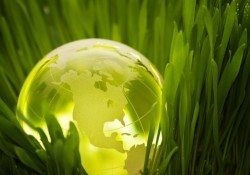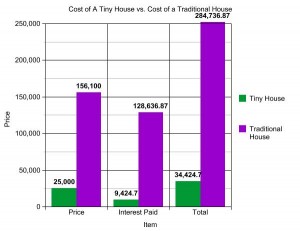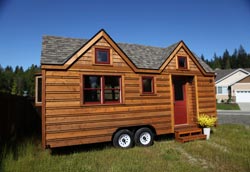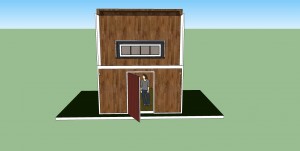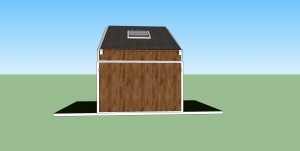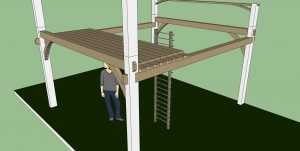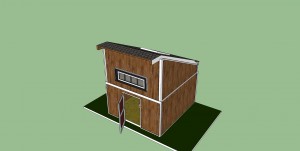SUSTAINABILITY (Week 3)
- Efficiency and Sustainability
- Sustainability- meeting the needs of the current generation without compromising the ability of future generation to meet their own need. A sustainable society restores, adapts, preserves, and enhances nature and culture for the benefit of the present and future.
- Population and Sustainability- the sustainable population for the capacity of the Earth might have been exceed years ago, Global warming is a common indicator of this because 90% of research is certain it caused by greenhouse gases produced by the activities of humans such as burning of fossil fuels, the removal of forest, and even today’s technology. Thus the higher standard of living we desire, the need to stop population growth will increase.
- Sustainable Building Priorities
- Sustainability- meeting the needs of the current generation without compromising the ability of future generation to meet their own need. A sustainable society restores, adapts, preserves, and enhances nature and culture for the benefit of the present and future.
- Save Energy-design and build energy efficient buildings
- Recycle Buildings-Utilize existing buildings and infrastructures instead of developing open space
- Create Community-design communities to reduce dependence on automobiles and to foster a sense of community
- Reduce Material Use-Optimize design to make use of smaller spaces and utilize materials efficiently
- Protect and Enhance the Site-Preserve or restore local ecosystems and biodiversity
- Select Low-Impact Materials-choose resources based on the efficiency of the material
- Maximize Longevity-design for durability and sustainability
- Save Water-design buildings and landscapes that are water efficient
- Make the Buildings Healthy-provide a safe and comfortable indoor environment
- Minimize construction and Demolition waste-return, reuse, and recycle job-site waste and practice environmentalism in your business
- Green Up your Business-Minimize the environmental impact of your own business practices, and spread the word
- Energy Sources (Finding the Power Produced [P≈Vᶾ x D²] (P=power output. V=air speed. D= rotor diameter)
Renewable
- Solar-not contributing to global warming
- Wind-windmills were primarily used tto pump water on farms and ranches. Wind turbines also produced electricity for remote areas before rural electrification. Today wind turbines are having a revival because they can produce clean and renewable energy at the cost of conventional energy and can supply 20% of the US needs.
- Biomass-photosynthesis stores solar energy gathered from the sun for later uses. This stored energy can be turned into heat or electricity; because biomass is renewable and carbon neutral, its pollution free and an efficient source of energy. Two main sources of biomass are from plants grown specifically for its energy and from organic waste from agriculture, industry, or consumers (our garbage)
- Geothermal-The extraction of heat deep from the earth and the use of the ground just below the surface as a source of heat in the winter and a heat sink in the summer. Geo Exchange (second way of extraction) the low grade thermal energy at normal temperatures of shallow ground can be extracted by a heat pump to heat buildings or domestic hot water (home used hot water). The use of geo-exchange can significantly reduce our consumption of energy and the corresponding emissions of pollution and greenhouse gases, reduction of 40%.
Nonrenewable
- Fossil Fuels-Green plants trapped solar energy by the process of photosynthesis. The accumulation and transformations of these plants into solid, liquid, and gaseous states produced oil, coal, and gas (fossil fuels). This age started around 1850 and will persist a few centuries ahead from now. Continuing to burn these fuels causes even more global warming.
- Oil-The most used and important energy source today. This sources demand became greater than the supply when half of it was extracted. The consistent usage of this source will lean us to using tar sand, or drilling deeper into the earth.
- Natural Gas-composed primarily of methane a very convenient source of energy that’s scares n supply because of its easy obtaining.
- Coal-Not the most reliant source because of it problematic extraction process and because coal is not the most convenient on transporting, handling, or for usage. Coal is a primary cause of acid rain, even if cleaned before burning it will continue to produce carbon dioxide and global warming. A plentiful source and risky source of energy but not our answer to our energy problems.
Nuclear
- Fission-When certain heavy atoms are split into two middle-size atoms, the process creates incredible amounts of energy because of the neutrons produced. Going nuclear power as our source will come with many toxic hazards to the public, the cost of a nuclear power plant is too high, the operating efficiency is too low as well, and the disposal of the waste has not been solved yet.
- Fusion-When two light atoms fuse to create heavier atoms, energy is then produced. In fusion hydrogen is used the most resourceful material, it produces much less radioactivity waste than fission. It is also much safer to extinguish if something goes wrong
TINY HOME SOCIETY (SMALL HOME MOVEMENT)* (Week 4)
Jamaica Cottage Shop
Living in a small home is Eco-friendly because you’re using fewer resources to build and maintain the home unlike the larger homes, and you won’t have the stress of worrying about how you’re going to clean and repair the home. In addition, smaller homes are more affordable and your energy bill will be lower. And living in a smaller home means you’ll be more conscious of what you’ll bring and keep in your home because you’ll want less clutter around. Some Americans put wheels on their smaller homes and place them in their backyards to be used as home offices, studios or extra bedrooms for guests. Other people who have been foreclosed upon choose to buy or build small houses and place them in the backyards of their parents or other relatives, which gives space to those who aren’t used to living together.
Traditional Living Cost v. Tiny house cost:
Pros and Cons that That I came up with for Tiny Home Living and Traditional Home Living:
Tiny Homes/ Tiny Home Trailer:
Pros:
- You save money on utility bills.
- If you don’t like where you’re living, you can hook up to your home and leave.
- Not as much (if any) yard to take care of.
- Since you don’t have a lot of utility bills you can save money for things you always wanted to do in life.
- You can have a new front yard anytime you like.
- You don’t have a lot in property tax to pay.
- You can clean your home in no time flat.
- You have a lot less house to maintain. (again, saving you lots of money)
- You don’t have a lot of useless stuff tying you down.
- You can build it yourself and pay cash, you you own it, not the bank.
Cons
- You don’t have a lot of room to get away from one another if you’re married.
- If you’re a guy who likes to putt around fixing and making stuff, you don’t really have enough room in a Tiny home.
- Not much storage space or closet space. (Have to think small and carry only important necessaries)
- It’s very hard to find a place to park your tiny home and live in it. (that’s a big one!)
Traditional Home Style:

Pros
- You have plenty of room for all the useless junk you collected over the years.
- You never have trouble finding a place to put your regular home, it’s on its own property.
- You always have all your utilities right at your fingertips. (Water, Electric, sewer etc.)
- You have a yard and don’t have to ask permission from anyone if you want to park your camper there or other things you might own.
- You have equity in your home as the years go by.
- You have enough space to entertain your guest comfortably.
- You’re always close to your doctors office in case anything were to happen
- You can grow a big garden.
- Having a definitive place to go makes you feel safe and secure.
Cons
- Payments even on a small home like mine are high and if you loose your job, you loose your home to. (that’s a big one)
- Taxes are high as are water and sewer rates.
- Utilities bills cost a lot more in a regular home.
- Your always working to support your house (pay the mortgage, insurance, utilities, up keep, it never stops) and it eats up all or most of your fun money.
- You have a lot bigger house to upkeep and repair!
- If your neighbor sells his house who knows what your next neighbor will be like, but who ever it is your stuck with them.
